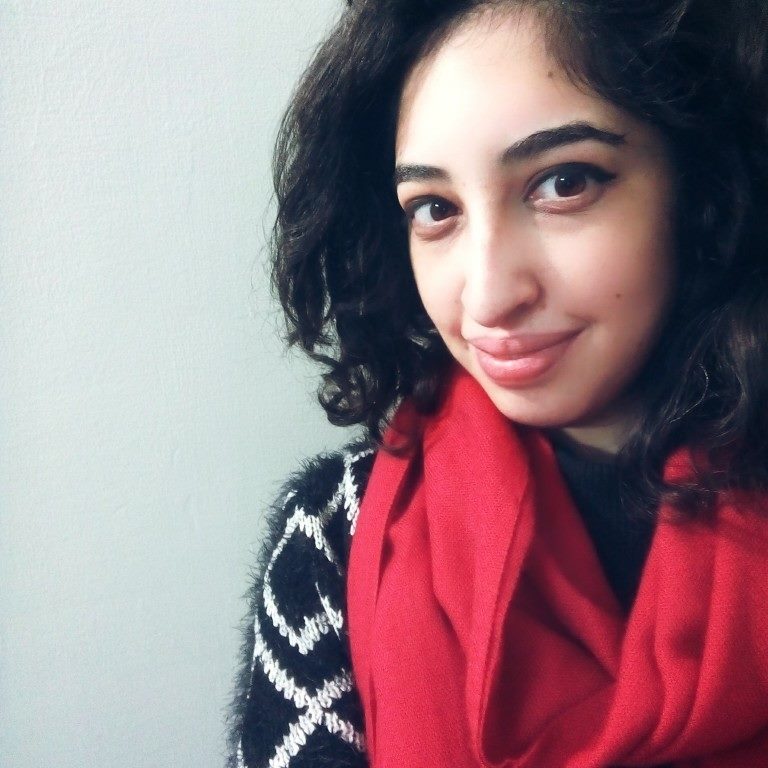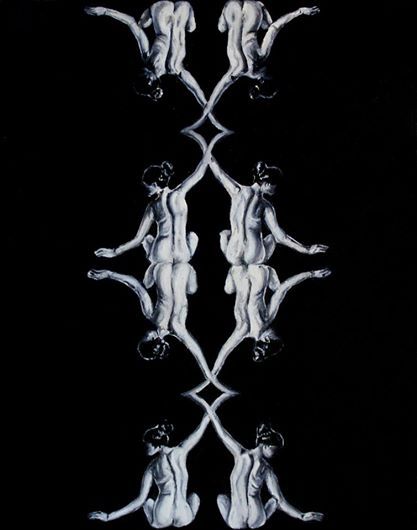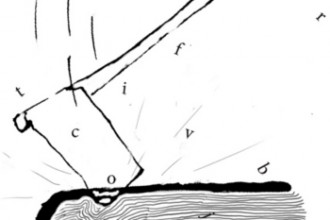Our Meet the Editors series concludes with the art section. Varda Nisar knows the image speaks louder than the words, and Shameen Arshad gazes at Francis Bacon while contemplating projection mapping.Â
What’s your current favourite medium: painting, multimedia, collage, etc?Â
Varda: All that exists. The most wonderful thing about art is that everything has the power to amaze you, and as we move more and more towards a place where the idea is the backbone of the artist’s work, it is really the thought that counts, as well as the way in which it has been brought forward.
Shameen: It varies. Every medium brings with it endless possibilities as well as limitations. It’s all about the narration. I feel a certain idea or visual can be so convincing in one medium and go completely unnoticed in another. Thus, I cannot label a particular medium as a favourite.
However, if I absolutely must pick one, I think it would be installations. I feel they have proven to be a very strong medium as most cater to all senses. They don’t just adorn a wall, but they seem to create an entire environment.
What does art do that words can’t do?Â
Varda: It can resonate with the masses. The dilemma that third-world countries, or “the developing worldâ€, faces at the moment is that there is a widening class divide. And the irony is that even the issues of the masses are discussed in a language that in most cases is alien to the region where they are. For example, in our case, that is Pakistan, the issues of the masses are always discussed in English, which is simply cruel, because it alienates more than half the population of this country who can barely read and write their own national language.
But with an image that changes. With an image you don’t need to worry about isolating people. You can easily connect with anyone, which is why art activism is such a fascinating field of artistic expression. You have people like Banksy who are going deep into conflict areas and highlighting the plight of the people. More than that, we have had iconic images that have given shape to global debates, Dorthea Lange’s 1936 photograph of “Destitute peapickers in California; a 32-year-old mother of seven children“ putting face on the Great Depression in America, or the photographic image of a Sudanese child being stalked by a vulture by Kevin Carter from 1993. And who can forget the images from the Vietnam War and Abu Gharib, and recently of the migrant crisis and how they have shifted the opinion of the world in a way that no number of editorials can ever do. Its amazing what an image can do.
Shameen: Both are mediums of expressions. Nowadays art is more than just visuals. It includes sounds, the sense of touch, also the written word. It makes it more powerful. But if we talk in the sense of conventional art making I feel visuals seem to have a great impact because they can communicate with a larger audience.
Furthermore, colours have a language of their own. An ability to weave a narrative that cannot be translated into words. Art can give tangibility to emotions that cannot be rendered in words.
How do you match a piece of artwork with a piece of writing? Content or feeling?Â
Varda: It is actually an interplay of both. Sometimes the title makes it easy enough to pick out an artwork, but in most cases you need to rely on subtle clues in the text, as well as in the artwork, to provide a sense of connection to the whole thing.
Shameen: I feel as if content is responsible for the feeling it brings out within people, so I would say both.
What work of art can you look at for hours and it’s like no time has past?
Varda: The Impressionists. It’s really like magic. The colours, the way the light hits the canvas. Of course, all of this is in my head, since I have yet to see a real, live Impressionist painting.
Shameen: I would have to say Francis Bacon, even if it is the poor quality of images on the Internet or in books. All I have been exposed to is a degraded version of his work, yet his paintings put me in a trance. The artist’s visuals are so strong!
Bacon really knows how to get under one’s skin. I feel Bacon really understood the human psyche. He uses that knowledge to make one uneasy. It’s this ability of the artist that makes me admire him and his work. His pictures are impregnated with emotion.
Shahzia Sikander is the second name I would like to add. There is so much going on in her images. It takes the viewer a lot of time to fully take in her compositions which consist of so many layers. These compositions when brought to life in her animated series really leaves one in awe!
Have you ever despised a work of art so much that you consider it non-art?Â
Varda: Some of the abstract art just doesn’t make sense to me. I simply do not understand them and I have no shame in admitting that to the world.
Shameen: Being a practicing artist today I have quite an acceptance for all the eccentricities that are presented in the creative field. However, I feel sometimes people try and get away with absurd creations under the banner of conceptual art. Art might be a medium of expression but it is also primarily about aesthetics. I feel all works of art need to have a certain aesthetic, that doesn’t mean one cannot create grotesque imagery or unpleasant scenes, it means that in order to create that art piece the artist has kept certain basics in mind like compositional balance, use of negative and positive spaces, etc.
What is your biggest frustration in the world of art? Does it come from you, or the world outside?Â
Varda: One of the biggest challenges that you face, and frustration too, is the fact that when you work in a country like Pakistan, it becomes really hard to explain to people why there is a need for art at all. And on a certain level that argument makes sense, I mean it is an argument that I have made on numerous occasions that in a country like ours where people don’t have food and water and basic life security, it is simply elitist to be indulging in things like art and recreation. But the fact remains that art is this wonderful thing that can bring one great joy, and at the same time be an instrument of change, this makes it very important. It becomes critical to understand the importance of art. When people don’t get that, it can be really annoying.
Another thing is this need to put an artist in a box. I think when you are in the creative field, it becomes hard to limit yourself. I mean you can be a writer, a concept developer, a festival manager, an art editor, a curator, a researcher and so much more. So when you are asked to define “What do you do?” by someone in a conversation, it becomes really hard to explain your work, as well as to get the other person to take you seriously. I think more than once you end up appearing as a crackpot who is a jack-of-all-trades, but master-of-none, which is not generally the case.
Shameen: Unlike people’s romantic ideas about the life of an artist, it is very difficult to survive in the art world. There are several things that could go wrong. However, the greatest problem we face is acceptability within the art market. So many artists are forced to take up alternate career paths because galleries are unwilling to promote names that are new or not very well-known.
Due to the existence of art lobbies, many new comers, no matter how talented, do not get the opportunity to show off. It is more about moving around in the right circles then about your skill and your dedication to the profession. Another thing that fetters any kind of creativity is the creative block that each individual is afflicted with sometime or another in their career, but that’s only natural.
What would you like to see more of?Â
Varda: I want to see more museums and creative festivals in Pakistan. I want there to be more active participation from the grassroots in these spaces, and I want such spaces to be for them and not to intimidate them.
Shameen: I have a great interest in projection mapping, a medium which is very new, or virtually nonexistent, in our country. Having used it myself, I feel that it has numerous possibilities.
What do you never want to see again?Â
Varda: A news item saying that an artist has killed him/herself because the world couldn’t understand them or there was no space for them to express themselves.
Shameen: An endless number of Sufi or “Dervish†paintings, numerous bucolic scenes or abstract female figures. In short, all the things that have been done to death. Work that seems to be particularly uninspired, paintings that are just created to decorate one’s living room, one that “matches the sofa set perfectlyâ€.
How are the arts perceived in Pakistan in your opinion? Do you think it’s changing?Â
Varda: Its a very grey area. The notion of a starving artist is still very strong which is why a lot of people shy away from going into this field. I think other than that I have commented a lot on this already.
Shameen: Most people do not understand why one would want to become an artist, instead of a doctor or an engineer; I mean, why not get into a respectable profession?
The more conservative ones believe that image making is not acceptable within their religion.
Thank god with time that perception is changing. We still have a lot of room for improvement. There are still several restrictions, such as galleries, are not very keen on displaying things that are socially not very acceptable, such as nude figures or satirical works based on politicians. However, I feel we have come a long way to go and will probably progress a lot more.
Do you feel like you’ve had to fight to be an artist? Or is it a privileged position?Â
Varda: I think no one has to fight to be an artist. If you are one, then no one can stop you from expressing yourself and doing what you want to do.
Shameen: I feel it’s my privilege to pursue this career because it gives me the freedom of expressing myself. Even if it’s not the most lucrative or the most respected profession there is a satisfaction in creating work and that satisfaction is worth more than monetary gains!
Staying up nights and fulfilling deadlines, seeing the work put up on the walls of a gallery is such a rush! It’s tough and unpredictable, but it is also very fulfilling. In short, despite numerous obstacles there still wouldn’t be anything else I would want to be in life other than being an artist.
Learn more about our editor-in-chief,  fiction, poetry, and nonfiction teams with our Meet the Editors series.








